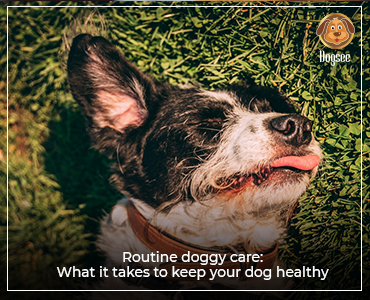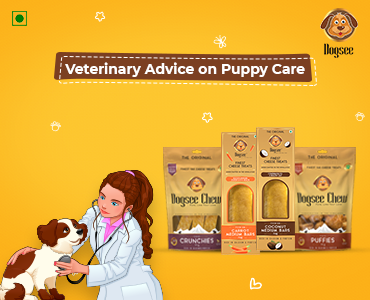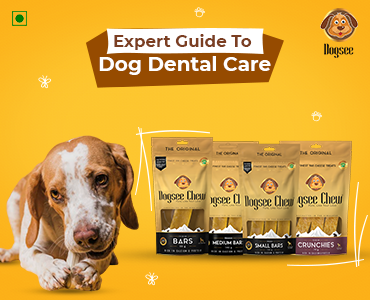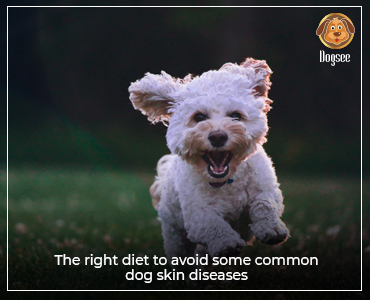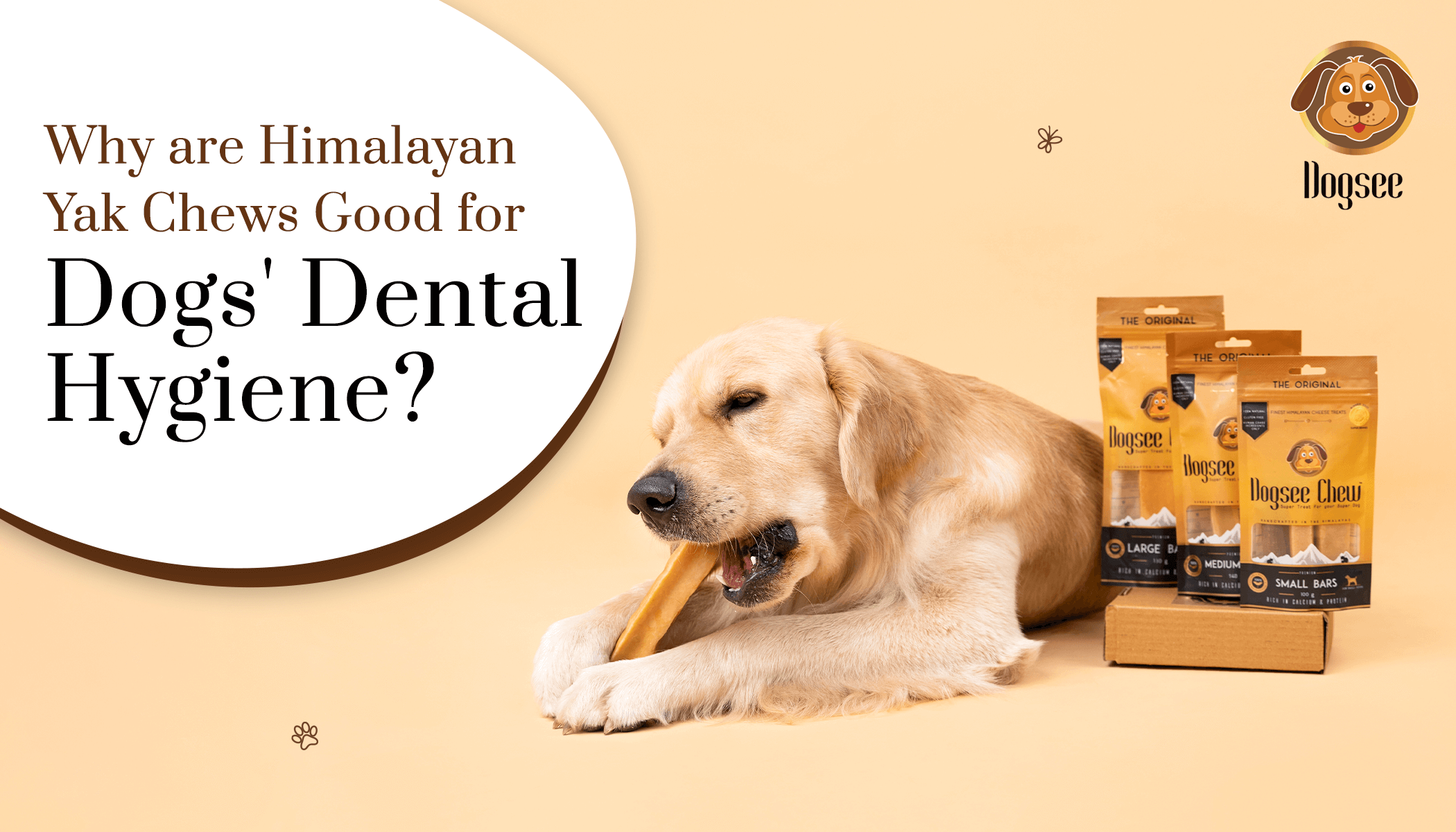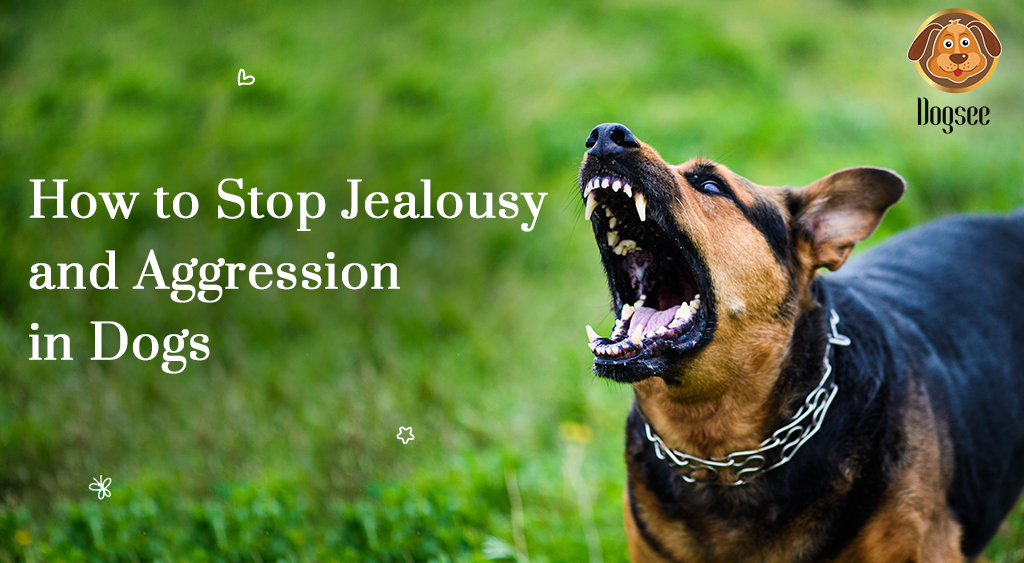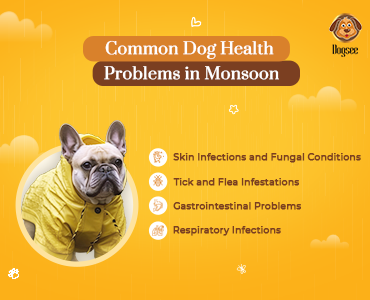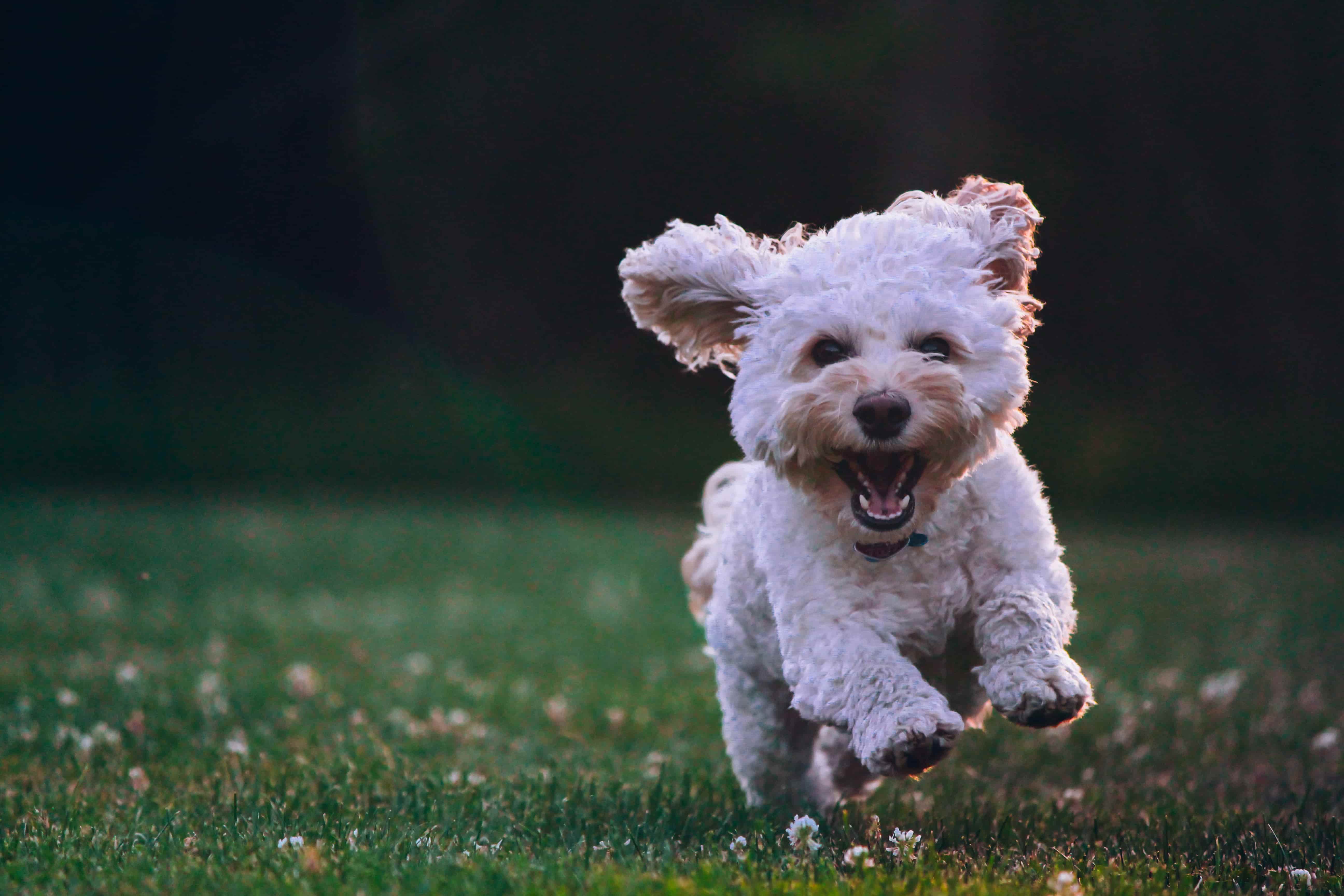
Just like humans, dogs can develop allergies or intolerance to certain foods or ingredients too. And, food allergies or intolerance can develop anytime - even when they’ve been eating the same food for years. The best course of action is to get your dog on the right diet. Before you can do this, you need to know what your dog might be allergic/intolerant to.
So let's take a look at the common food allergens and signs & symptoms of allergies so you can understand the basics of dog health & nutrition and take better care of your little one.
Food Allergies in Dogs
Food allergy is the most common one known to affect dogs. When your dog eats something that he/she is allergic to, then their immune system goes on overdrive and produces antibodies against that particular food or ingredient. That’s not to say that you’ll immediately spot food allergies - your dog might show symptoms of an allergic reaction to food after prolonged consumption.
The most common food allergens are:
Gluten
Grains
Eggs
Soy
Dairy
Beef
Chicken
Lamb
Signs Your Dog Has Food Allergies
Pruritus (Itchy Skin)
This is the most common allergic reaction seen in dogs with food allergies. If your pet has an allergic reaction to certain foods or ingredients, you’ll probably see itchy, irritated skin all over their body - and it can be anywhere like near the head, stomach, ear, paw, etc.
Dogs itch at all times, sometimes for no reason, but if you spot your dog itching incessantly to the point of hurting herself, it’s probably because of an allergic reaction. A slight touch to that area can make your dog itch like crazy. Also, when you touch the itchy area, it would feel like flaky, cracked skin.
Hives
If your dog eats something he/she is allergic to, you’ll notice small red bumps all over the body within 24 hours. What's happening is your dog is breaking out in hives, also known as urticaria. Your dog will also start scratching or licking the skin constantly to relieve the itch which could actually worsen the skin and lead to cracked or “broken skin” or hair loss in that particular area.
Hot Spots (Acute Moist Dermatitis)
Hotspots are areas of infected, inflamed skin that often look like insect bites at first. They get enlarged as your dog keeps licking, itching, and scratching them. The repeated cycle of itching/scratching/licking makes the hotspot go from being a small wound to large red, oozing, and painful lesion.
Hotspots are normally seen on the head, limbs, and hips. The particular area of the hotspot has redness, swelling, and hair loss so it’s pretty easy to spot. They’re extremely painful, and itchy which is why your dog is tempted to keep repeatedly scratching the area. The best thing to do is go to your vet, and get a proper diagnosis and treatment so your dog can feel better soon, and to prevent hotspots from recurring.
Chronic Ear Infection
Infected ears are a telltale sign of a food allergy. While your dog could have an ear infection from ear mites, yeast infection, or water (this is if your dog frequently goes swimming), we’re talking about the kind of infection where no cleaning solution or anything has any effect on the stinky ears with brown/black build-up.
If you notice brown/black build-up that requires frequent cleaning during the week, and this happens more than 2 -3 treatments a year, it's probably chronic ear infection caused by a food allergy.
If you’re not sure about whether it really is a chronic ear infection, you can try at-home ear cleaning, professional ear cleaning, and see if that makes any difference. Take a trip to your vet to get an accurate diagnosis and get your dog on a proper treatment plan.
Gastrointestinal Issues
If your dog has developed an allergy to an ingredient, he/she will probably suffer from vomiting, indigestion, diarrhea, and chronic gas. These reactions are much easier to notice especially if your dog is suddenly experiencing these symptoms.
How to Feed Dogs with Food Allergies
The first thing you should do is consult your veterinarian, and rule out anything else that might be wrong. Once it’s confirmed that your dog does indeed have a food allergy, start noticing the way your dog reacts to certain foods when he/she develops allergic reactions. This will make it easier to rule out possible allergy-causing ingredients.
Once you’ve identified the ingredients, start eliminating them from your dog's diet. It can be easier said than done since a lot of the commercial pet food brands contain almost the same ingredients - even the ones advertised as limited ingredients.
It’s important to pay attention to the treats as well because even if you eliminate the particular ingredient from your dog's main meals, if you feed them treats that contain the same ingredients, they’ll still end up developing reactions and common diseases.
What to Look for When Buying Food or Treats
All-Natural:
Regardless of whether your dog has food allergies or not, it’s always best to feed your dog an all-natural diet. This doesn’t mean a raw diet, it means ensuring that the ingredients in your dog’s food and treats are natural, unadulterated ingredients.
Grain/Gluten Free:
Grain and gluten are the two most common food allergens. More than an allergen, these are ingredients that are sometimes just hard to digest for dogs so you’ll actually see dogs have gluten/grain intolerance - which means their body is simply unable to break these compounds down.
Preservative - Free:
Making sure your dog’s food and treats are preservative-free not only prevents skin diseases caused by food allergens but it also minimizes the risk of chronic and sometimes lethal infections and diseases.
Preservatives are most commonly found in commercial pet foods that are processed at high temperatures. Even if their main ingredients are natural, when they go through the processing, all the natural nutrients are basically sucked away. So, as the last step, the companies go back in and add flavors to give it back the taste and “nutrients” of the ingredients. But what actually happens is when these additives interact with the molecular compounds of the natural, now altered ingredients, they become toxic and harm your pup when they consume them.
Single-Ingredient:
It’s one of the best ways to prevent food allergies in the future because you’re able to pinpoint the ingredients and eliminate the ones that your dog is allergic to. Dogsee has amazing single-ingredient fruit and veggie treats that are freeze-dried and fat-separated. These treats come in 4 different flavors: apple, banana, beetroot, and coconut, so you’ll still have options if your dog is allergic to one of them.
Healthy Treats For Allergy-Prone Dogs
Dogsee Chew treats are a great option that is affordable, and human-grade (the best part, honestly). These treats are 100% natural, minimally processed, preservative-free, and chemical-free. The natural nutrients in these treats provide so many benefits for your dog.
Dogsee Chew Hard Bars
These hard bars are made from cow or yak cheese from the Himalayas and are handcrafted using traditional methods. Unlike mass-manufactured brands, these hard bars are minimally processed so all the nutrients are intact.
They are great for your dog's dental hygiene - they work to keep the plaque and tartar buildup at bay which is especially great if you’re unable to brush your dog's teeth frequently. Their turmeric hard bars have strong antioxidants that support your dog's joint, dental, and immune health.
Puffed Treats
If you’re looking for bite-sized treats, soft dental treats, or puppy chews, Dogsee Puffed Treats are another great option. These are basically made like the hard bars except these are heated just a bit for a crunchy texture. And because they’re puffed, they have uneven shapes which help to really get in-between each tooth and remove plaque and tartar buildup.
Even beyond the dental benefits, these treats help with weight management and promote healthy skin and shiny coat.
The best thing you can provide your dog is the right diet that improves their health - a diet that avoids harmful chemicals and preservatives. So take a step towards all-natural food and treats that avoid common food allergens and preservatives to keep your dog healthy and happy!
 HELPFUL0 people found it helpful
HELPFUL0 people found it helpful
Related Blogs
Subscribe to Our Blogs
and never miss on the latest update!








